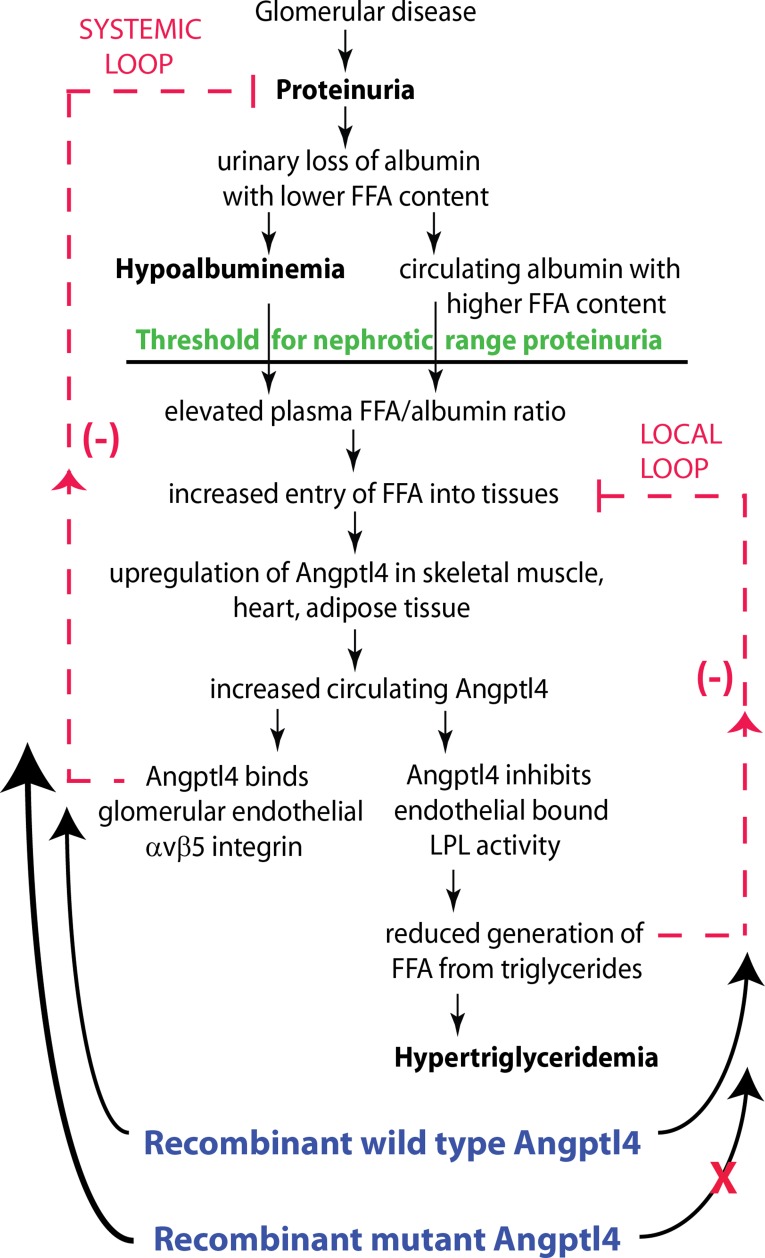Figure 3.
Schematic illustration of negative feedback loops in the link between proteinuria, hypoalbuminemia, and hypertriglyceridemia mediated by Angptl4 and FFA. Plasma FFAs are noncovalently bound to albumin. Because of the preferential loss of albumin with low FFA content in nephrotic syndrome, there is a relative increase in circulating albumin with higher FFA content. Because glomerular disease progresses to severe proteinuria, hypoalbuminemia develops, and the combination of high albumin FFA content and lower plasma albumin levels increases the FFA-to-albumin ratio. It promotes entry of FFA into skeletal muscle, heart, and adipose tissue, which causes upregulation of Angptl4 at least partially mediated by PPARs. Angptl4 secreted from these organs participates in two feedback loops. In the systemic loop, it binds to glomerular endothelial αvβ5 integrin and reduces proteinuria. In a local loop, it inactivates LPL in the same organs from which it is secreted to reduce the uptake of FFA, thereby curtailing a stimulus for its own upregulation. Reproduced from reference 14, with permission.

